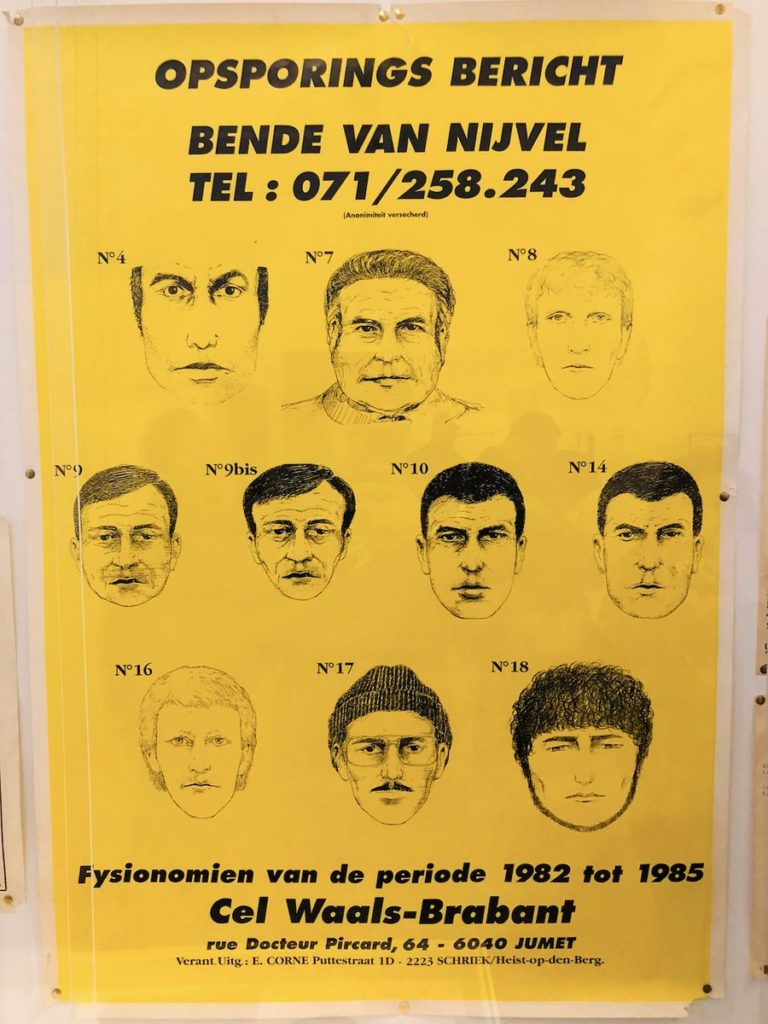Hundreds of Belgians will be asked to provide samples of their DNA in the latest attempt by police to break open the case of the so-called Killers of Brabant, unresolved since the 80s.
A gang known in Wallonia as the Mad Killers of Brabant and in Flanders as the Gang of Nivelles is at the centre of the criminal file, with police still working to determine their identities since the first of a string of murderous raids and burglaries that killed a combined 28 people.
Eric Van der Sypt, a spokesperson with the federal prosecutor's office, said that a breakthrough in the file could be in the horizon after a court approved the collection of DNA samples from hundreds of Belgian citizens, De Morgen reports.
"The entire operation will depend on voluntary [sample] donations," Van der Spyt said, since the legal 30-day window to draw up a DNA profile out of a sample has long expired.
Investigators are expecting any of the collected samples to match with one of only two full DNA profiles established since the investigation was opened more than 30 years ago.
Additionally, the move to harvest DNA samples could also give investigators a nudge in the right direction, Van der Spyt noted.
"It goes without saying that anyone who refuses [to have their DNA collected] becomes suspicious," the spokesman said, adding that a refusal could lead to a court warrant for the sample.
Related News
- Brabant Killers: “Giant” allegedly in a foreign jail, could be out in a year
- Brabant killers: ex-gendarme suspected of manipulating investigation called in for questioning
Van der Spyt said despite the few leads uncovered since the last incident took place in 1985, "heaps of work" continued to be done "behind the scenes" to solve the criminal case, which has puzzled members of the public and also led to unconfirmed suspicions that security or law enforcement authorities were tangled in with the gang.
Three men known as the Killer, the Giant and the Old Man are thought to be the core members of the group, which carried out a string of violent attacks and burglaries targetting establishments ranging from grocery shops and restaurants to weapons dealers and gendarmerie barracks.
Complicity rumours
Suspicions that authorities could be complicit targetted, in particular, the now-abolished Belgian gendarmerie, with the gang suspected of having access to insider information to elude capture by the body on several occasions.
From 1981 the group committed a series of burglaries, thefts and assaults which saw them walk away with money and weapons and at times unorthodox loots including food, wine and coffee.
The deadliest burglaries both took place in Delhaize supermarkets in two separate occasions in 1985, with each assault resulting in the deaths of eight people.
The renewed push for a DNA-based lead in the case comes after the statute of limitations period for the file was pushed back just ahead of the 2015 deadline.
Investigators have already collected an initial round of samples in past weeks from men and women named in the file, including some who have already provided a sample even if it gave a false result in the past or if it was not possible to analyse a mixed DNA sample, made up of a known and unknown profile.
Van der Spyt said advancements in DNA profiling methods could shed a new light in the case and that renewing samples would help the investigation to carry on with "a good foundation."
"Who says that those old DNA samples have been well preserved after all these years?" he said. "And today's DNA technology also offers many more options, for example, analysing a mixed sample was not possible in the past — today it is."
Gabriela Galindo
The Brussels Times

